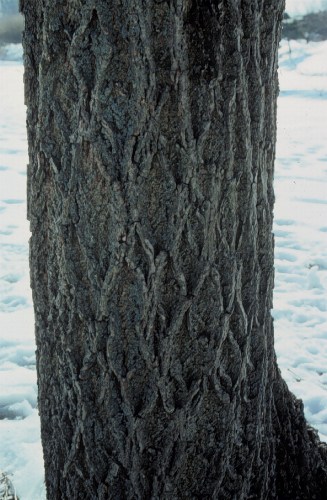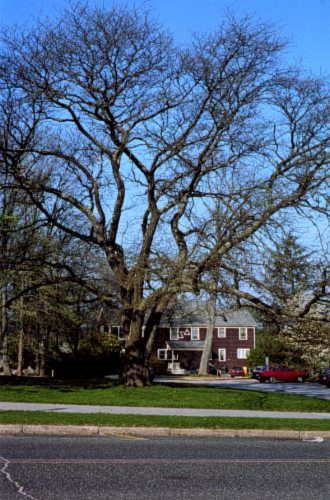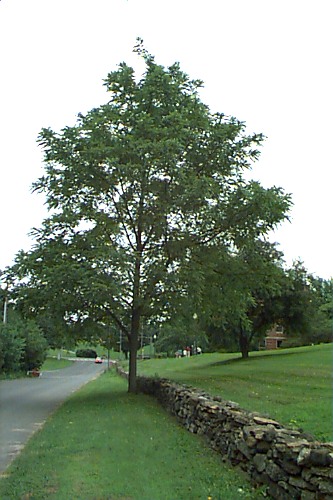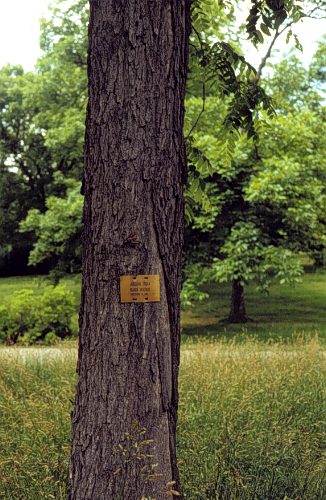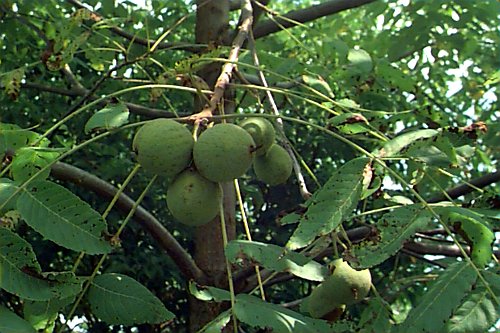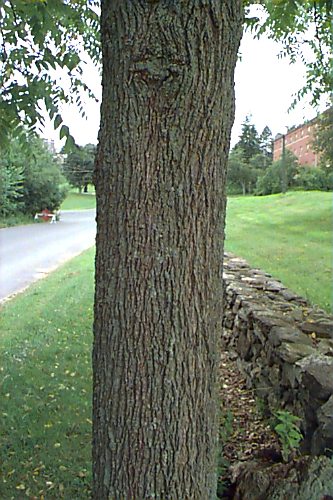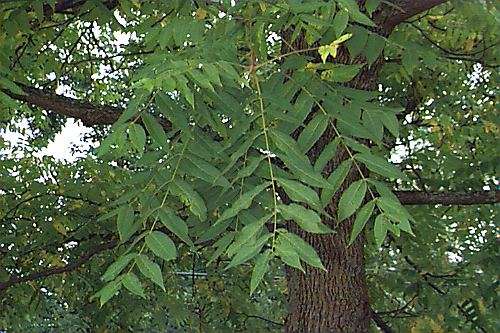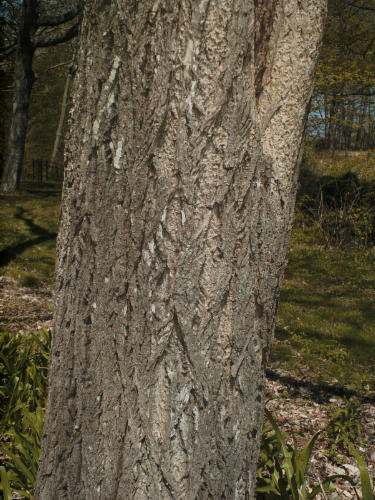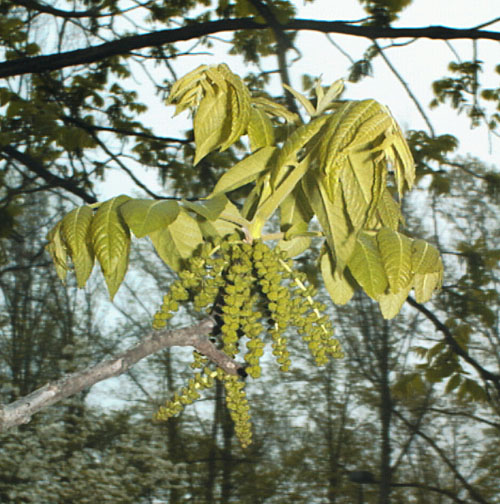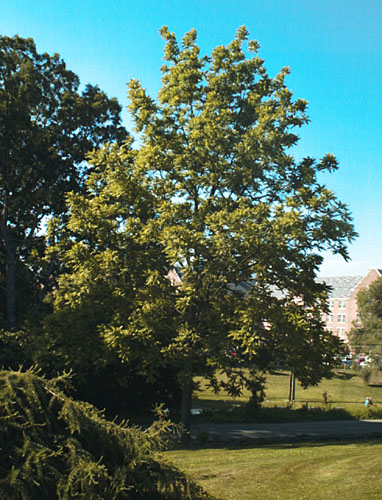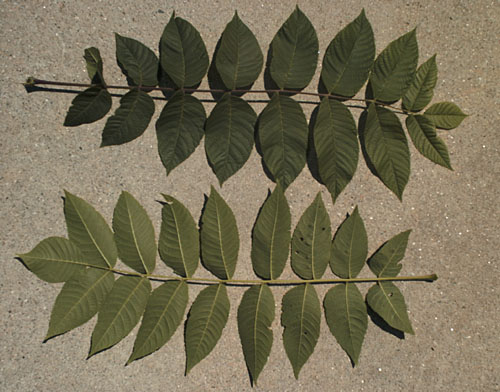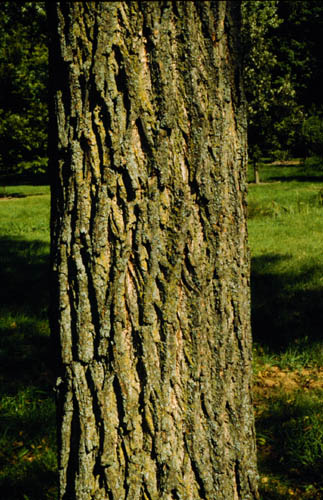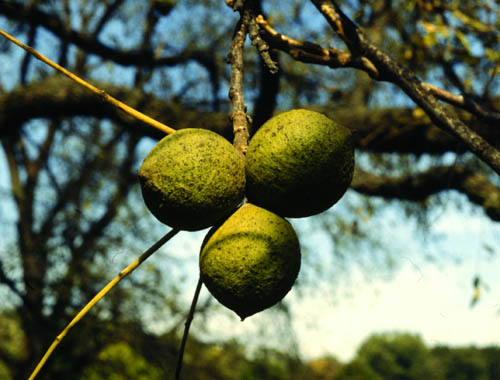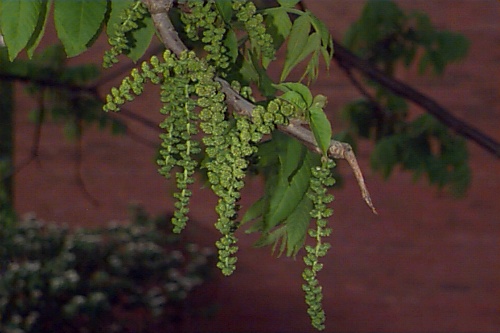Juglans nigra
Black Walnut
Juglandaceae
ExpandHabitat
- native from New England down through Texas
- hardy to zone 4
Habit and Form
- large deciduous tree
- 50' to 75' tall
- oval, open crown
- coarse texture
- medium growth rate
Summer Foliage
- alternate leaf arrangement
- pinnately compound leaves
- one foot to two feet long
- up to 23 leaflets
- leaflets are up to 5" long
- leaflets are serrated
- dark green leaf color
- leaves emit odor when crushed
Autumn Foliage
- yellow fall color
Flowers
- monoecious
- male flowers are catkins, small scaley, cone-like buds
- female flowers are up to 8-flowered spikes
- not ornamentally important
Fruit
- fruit is a nut
- semi-fleshy covering green changing to black and breaking open
- seeds are edible and oily
Bark
- dark brown to grayish black
- deep narrow furrows
- diamond-shaped pattern
- stout stems
- bitter tasting
Culture
- difficult to transplant
- prefers moist, well-drained soil, rich and deep soil
- full sun
Landscape Use
- for food
- for fruit
- lawn trees
- parks and wide open spaces
Liabilities
- fruits can be messy
ID Features
- large pinnately compound leaves with numerous leaflets
- downy, terminal buds, 0.33" long
- stout stems
- leaves emit odor
- fruit is a nut
Propagation
- by seed
Cultivars/Varieties
'Laciniata' - This is a rare form with leaflets that are fern-like and dissected with fine texture.
